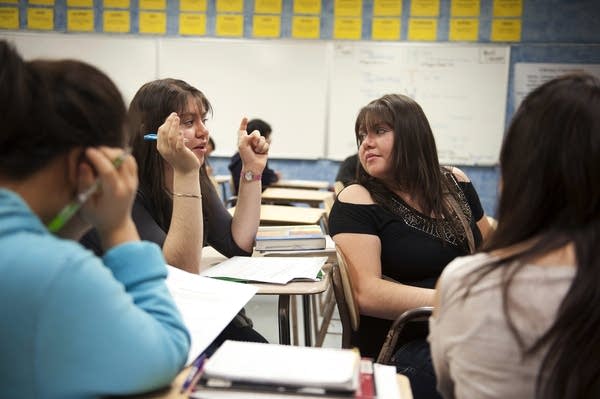Ranks of English learners swelling in Minnesota schools

Maria, left, and Ines Mendez discuss Shakespeare's "Othello" with classmates during a literature class on Thursday, Dec. 13, 2012, at Harding Senior High School in St. Paul.
Photo by Anthony Kwan
Go Deeper.
Create an account or log in to save stories.
Like this?
Thanks for liking this story! We have added it to a list of your favorite stories.


